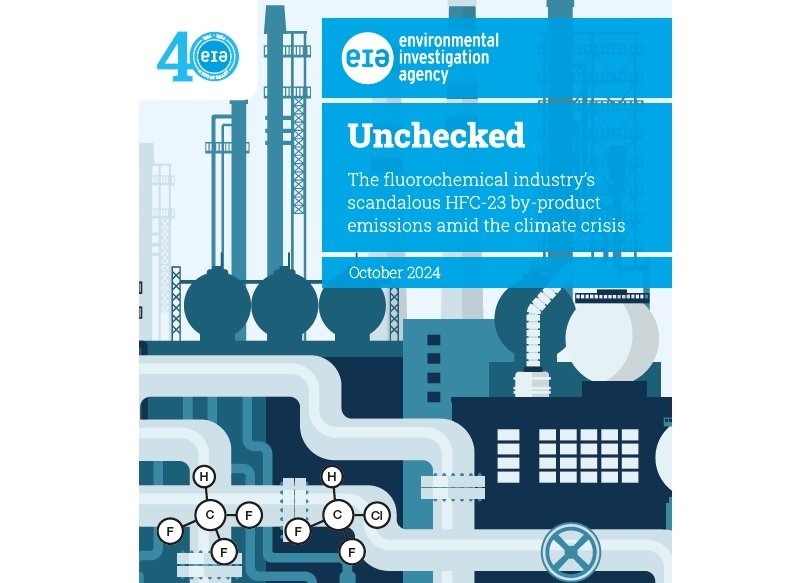EIA: Unchecked Emissions of HFC-23 Challenge Global Climate Goals
The Environmental Investigation Agency (EIA) has released a groundbreaking report highlighting the unexpected and unchecked emissions of HFC-23, a potent greenhouse gas with a Global Warming Potential (GWP) of 14,700. Despite international regulations, including the Kigali Amendment to the Montreal Protocol, emissions of this by-product from HCFC-22 production continue to exceed anticipated levels, posing significant challenges to global climate targets and sustainable refrigeration practices.
Key Findings
- Record Emissions: In 2019, global HFC-23 emissions peaked at 17,300 tonnes, equating to 254 million tonnes of CO2 equivalent. Though emissions have decreased slightly since 2020, they remain alarmingly high.
- Primary Source: HFC-23 is mainly produced as a by-product of HCFC-22, itself an ozone-depleting substance under phased elimination. Despite technical feasibility for its capture and destruction, gaps in implementation and compliance persist.
- Discrepancies in Reporting: A significant gap exists between atmospheric monitoring and reported emissions data, with China alone accounting for up to half of the global emissions gap from 2015 to 2022. Limited data from other major producers, including India, the U.S., and Russia, further compounds the problem.
Recommendations
The EIA calls on the Parties to the Montreal Protocol to take urgent action, including:
- Enhanced Transparency: Improved monitoring, reporting, and verification mechanisms to ensure accountability in HFC-23 emissions.
- Strict Abatement Measures: Immediate bans on non-essential uses of HFC-23 and a mandate for destruction in HCFC-22 production facilities.
- Targeted Monitoring: Focused efforts on regions with high fluorochemical production and suspected unreported emissions.
Call to Action
"Unchecked HFC-23 emissions are not only a direct threat to the Kigali Amendment's goals but also a stark reminder of the need for stronger international cooperation and enforcement," said the EIA. The upcoming Meeting of the Parties to the Montreal Protocol presents a critical opportunity for governments and stakeholders to address these challenges head-on.
